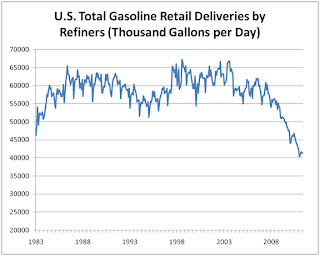I saw news today that Solyndra was forced to declare bankruptcy today. There's lots of handwringing and schadenfreude happening over this because $535 million loan guarantee from the Department of Energy. It was part of the vaunted 'green jobs' part of the stimulus.
I think its actually good (overall) that prices are coming down, and we're seeing some consolodation in the industry. The only way solar ever gets to grid-competitive (which is very possible) is by reducing prices. And - there's a lot of solar companies in the US right now. There were a lot of car companies in the US in 1910. Recessions thinned them our so that only the best three remained to compete around the world. Don't think that early car companies didn't get any federal help. Probably an even better example is the railroads. There were many - they all received support from the federal government
And - even with the Chinese driving down prices, the US had a $1.9 billion surplus in solar exports last year, according to the Solar Energy Industry Association. So - even if there's not a lot of jobs - that's still a lot of money being made.





